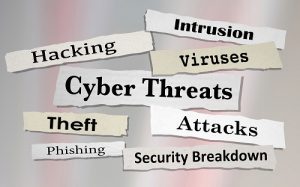 Phishing attacks are nothing new, but in 2025, they’ve become more advanced, harder to spot, and more dangerous than ever. Cybercriminals are crafting emails, texts, and even phone calls that can fool even the savviest internet users. Understanding the latest tactics—and knowing how to protect yourself—is crucial to staying safe online.
Phishing attacks are nothing new, but in 2025, they’ve become more advanced, harder to spot, and more dangerous than ever. Cybercriminals are crafting emails, texts, and even phone calls that can fool even the savviest internet users. Understanding the latest tactics—and knowing how to protect yourself—is crucial to staying safe online.
How Today’s Phishing Attacks Work
In 2025, phishing has gone beyond simple fake emails. Here’s what attackers are using now:
- AI-Generated Emails: Hackers are using AI to create realistic, error-free emails that mimic companies, banks, or even your coworkers.
- Phishing by SMS and Messaging Apps: “Smishing” attacks (phishing via SMS) and scams through WhatsApp, Telegram, and even Instagram DMs are on the rise.
- Voice Phishing (Vishing): Some attacks now come through convincing phone calls pretending to be from tech support, your bank, or government agencies such as the IRS, Medicare or social security administration.
- Deepfake Scams: In rare but growing cases, criminals are using AI to create deepfake videos or audio messages to impersonate people you know or trust.
The Common Signs of a Phishing Attack
No matter how advanced the technique, phishing attempts often share common red flags:
- Urgency or Fear Tactics: “Act now or your account will be suspended!”
- Unusual Sender Information: Slight misspellings in emails (like amaz0n.com instead of amazon.com) or unknown phone numbers.
- Requests for Sensitive Info: Legitimate companies won’t ask you for your password, Social Security number, or payment details over email or text.
- Suspicious Links: Hover over links (without clicking!) to see the real web address. If it looks strange, it probably is.
How to Protect Yourself
 You don’t have to be a cybersecurity expert to avoid getting hacked. Here’s what you can do:
You don’t have to be a cybersecurity expert to avoid getting hacked. Here’s what you can do:
- Think Before You Click: Always pause and verify before clicking on links or downloading attachments.
- Enable Multi-Factor Authentication (MFA): MFA adds an extra layer of security even if your password is stolen.
- Use Strong, Unique Passwords: Don’t reuse passwords across sites. A password manager can help.
- Verify Through Another Channel: If you get a weird message from your bank, call the number on their official website, not the one in the email.
- Update Your Software: Regular updates patch security holes that hackers exploit.
- Educate Yourself and Your Team: If you’re a business owner, train your staff. Human error is still the biggest weakness hackers exploit.
- Report Suspicious Activity: Forward phishing emails to your IT department or report them to your email provider. Many companies have a “phishing@” address for this purpose.
Stay One Step Ahead
Phishing attacks will keep evolving—but so can your defenses. Stay cautious, stay informed, and don’t let hackers make you their next target.
Don’t leave your business vulnerable to the latest phishing attacks!
At Integrated Technology Systems, we specialize in helping companies like yours stay ahead of cyber threats with proactive security solutions, employee training, and real-time threat monitoring.
Contact us today to schedule a cybersecurity assessment — and make sure your team knows exactly how to spot and stop phishing attacks before they cause real damage.
Integrated Technology Systems
6 East 45th Street, Suite 400
New York, NY 10017
212-750-5420
https://www.itsnyc.com



